Unit 9 Overview: Cold War and Contemporary Europe
5 min read•january 13, 2023
Eric Beckman
AP European History 🇪🇺
335 resourcesSee Units
Unit 9: Cold War and Contemporary Europe
Welcome to the final Unit of AP Euro 🤗!!! Unit 9 covers European History since World War Two. Look for connections to that war and links to developments from the first half of the 20th Century.
📄 Study AP European History, Unit 8: 20th Century Global Conflicts
International Relations
Despite their World War II alliance, the USSR became fierce rivals to the US and Britain following the war. This conflict was initially “cold” because the adversaries did not directly fight each other 🥶.
Post-War Recovery
The horrendous human catastrophe of World War II left Europe in need of extensive reconstruction. The United States financed much of this (but only for its capitalist allies) through the Marshall Plan. Within a decade, Western countries rebuilt 👷 and experienced tremendous economic growth.
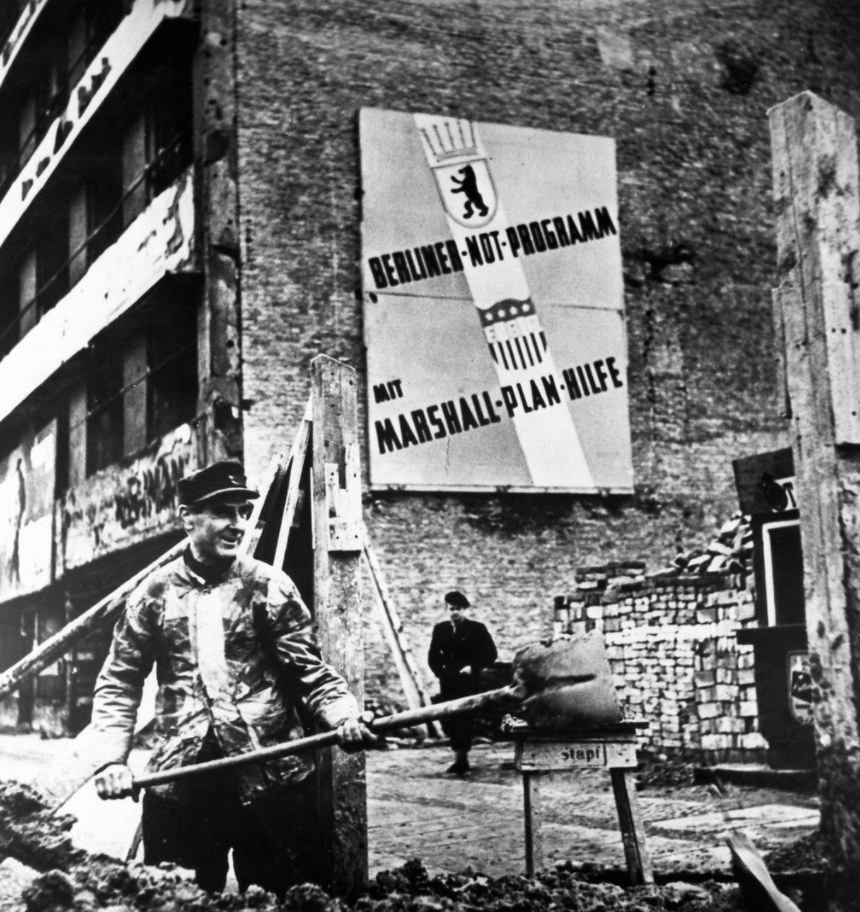
Construction in West Berlin financed by the Marshall Plan, 1948
Cold War Tensions
The Cold War divided Europe into Eastern (Communist, Soviet-allied) and Western (capitalist, American-allied) blocs, or groups of countries. Westerners called this division the Iron Curtain–imagine a curtain coming down at the end of a play 🎭, dividing audience and stage. Geopolitically, the Western bloc, plus Greece and Turkey, organized for common defense through the NATO alliance. The USSR and its six Eastern satellites countered with the Warsaw Pact.
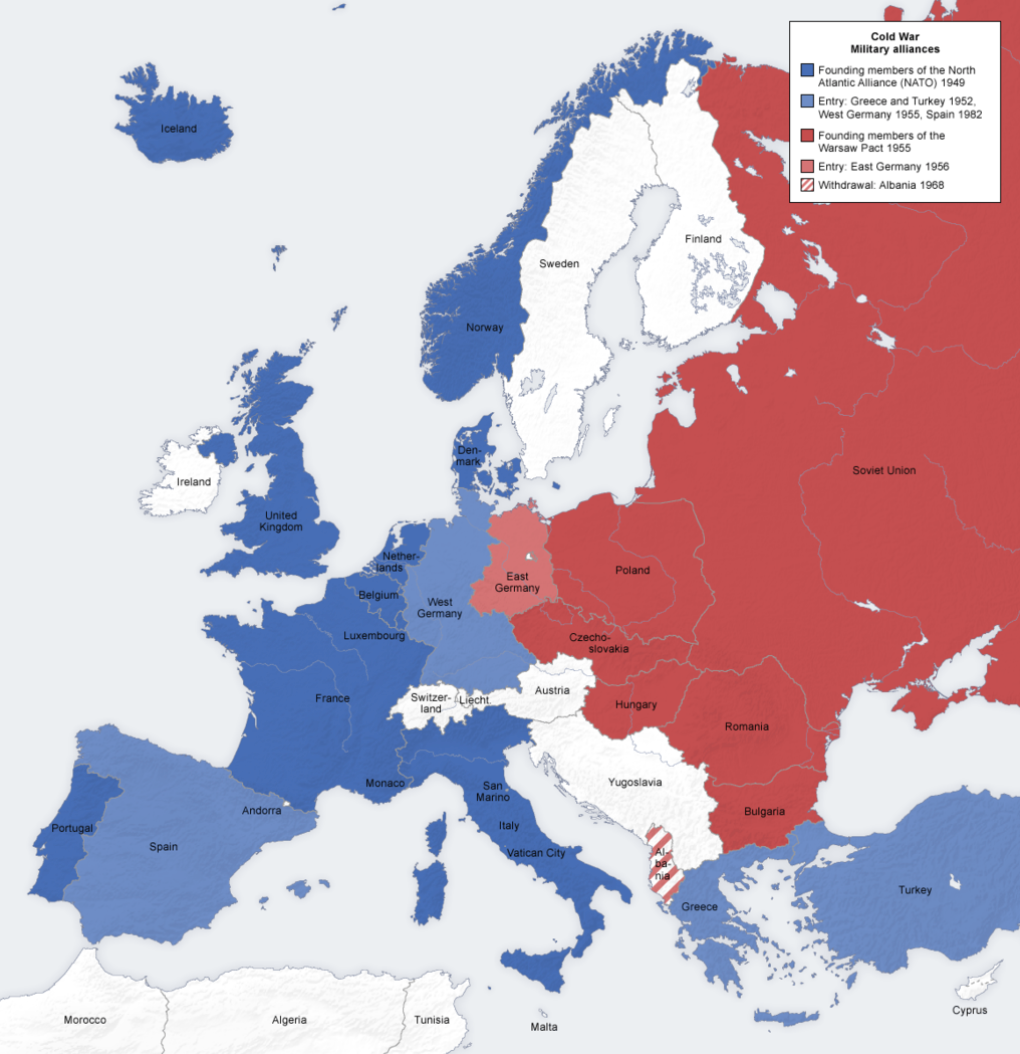
Cold War Military Alliances
Globally, the Cold War involved competition for influence. Both sides promoted their ideas and interests through propaganda, secret operations, and large nuclear arsenals. The Cold War also included shooting, or “hot,” wars such as the Korean and Vietnam Wars 🥵.
📄 Study AP European History, Unit 9.4: The Two Superpowers Emerge
Decolonization
During the 20th Century, people in most overseas European colonies created independent states as part of decolonization. Resistance always accompanied European imperialism, and nationalist movements created many new states after World War II. European responses to decolonization varied. The process was sometimes violent, especially when European settlers (e.g., Algeria 🇩🇿) or Cold War dynamics (e.g., Vietnam 🇻🇳) were involved.
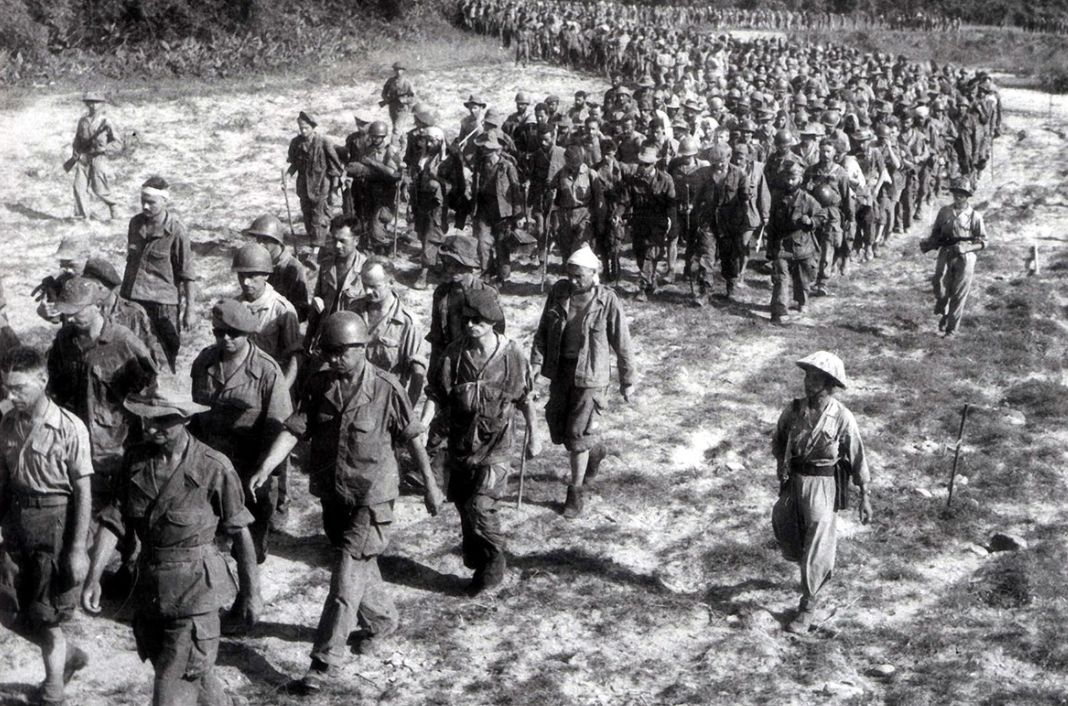
French troops captured by Vietnamese nationalists, 1954
Political and Economic Systems
Western
Western countries participated in the US-led global capitalist trade system. Many experienced an “economic miracle” of extended growth 📈 in the decades following World War II. These countries used more government economic planning than the US, but much less than the USSR. Post-war democratic Western Europe governments expanded the welfare state (government programs providing economic benefits to citizens) but later limited these programs.
Economic integration (merging) after World War II contributed to this growth. Beginning with six countries focused on coal ⛏ and steel (map below), European economic integration increased over time, including more countries and more products.
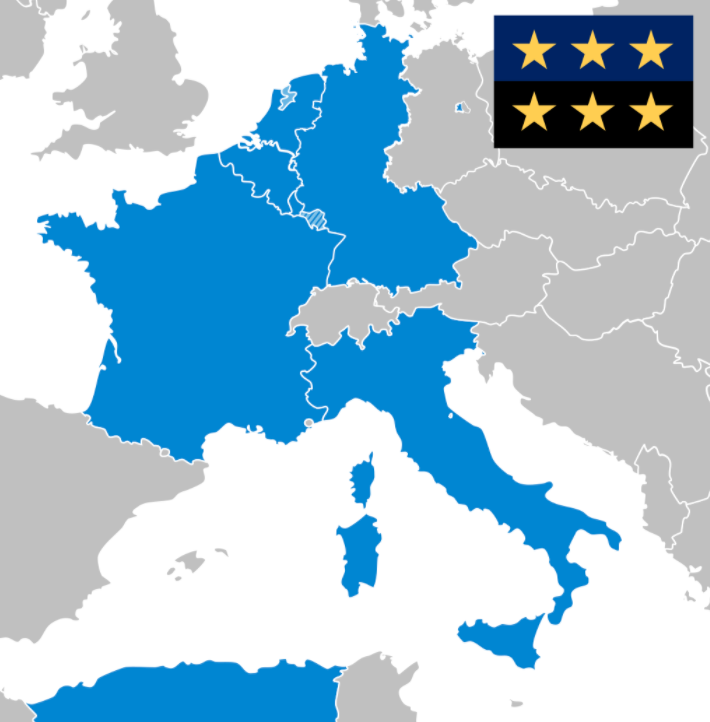
Note Algeria was a French colony at the time of the map, 1952
This cooperative process culminated with the creation of the European Union, 1993. Today the EU includes more than twenty states and has a common currency, the Euro 💶.
Eastern
In its bloc, the USSR imposed its economic and political model. This meant centrally planned economies, social welfare programs, and harsh limits on individual rights. Nikita Khrushchev emerged as the Soviet leader after the death of Joseph Stalin in 1953. He allowed some reforms, but Khrushchev and later leaders crushed Eastern Europeans who pushed for limited independence.
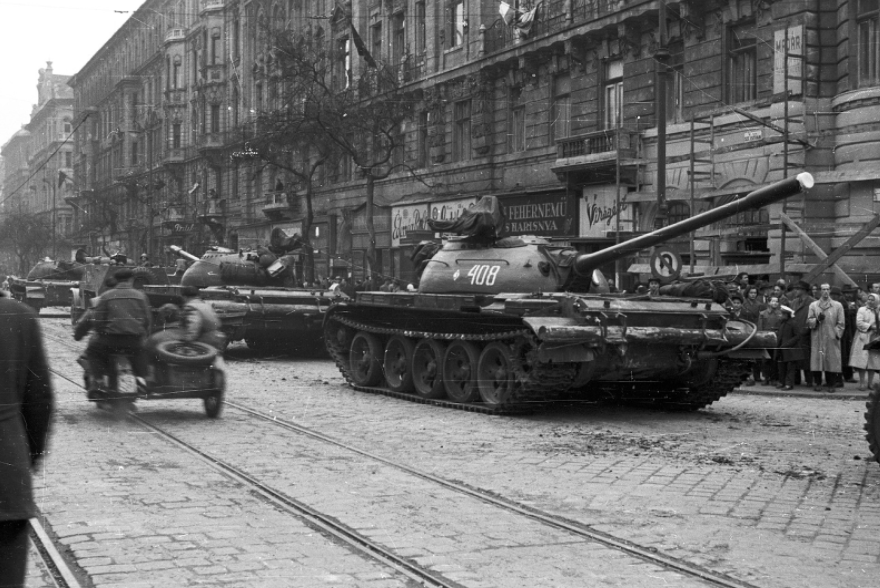
Soviet tanks in Hungary, 1956
The Soviet economic and political system collapsed in the late 1980s. Mikhail Gorbachev, the last leader of the USSR, attempted to reform the system in order to save it. This failed, and the Union of Soviet Social Republics dissolved, becoming fifteen independent states in 1991. Formerly communist states became capitalist, and many joined the European Union. The Cold War was over 🙏!
📄 Study AP European History, Unit 9.7: The Fall of Communism
As the Cold War ended, nationalism again became powerful and prominent 💪. Nationalists in Central and Eastern Europe successfully overthrew communist rule from 1988-1991. But, like earlier nationalisms, these movements along with separatist groups across Europe sometimes contributed to terrorism, war, and (in the Balkans) genocide. On the other hand, Nationalism peacefully ☮️ transformed post-communist Germany (two countries → one) and Czechoslovakia (one country → two). Nationalists also sometimes opposed the membership of their states in international organizations, especially the European Union.
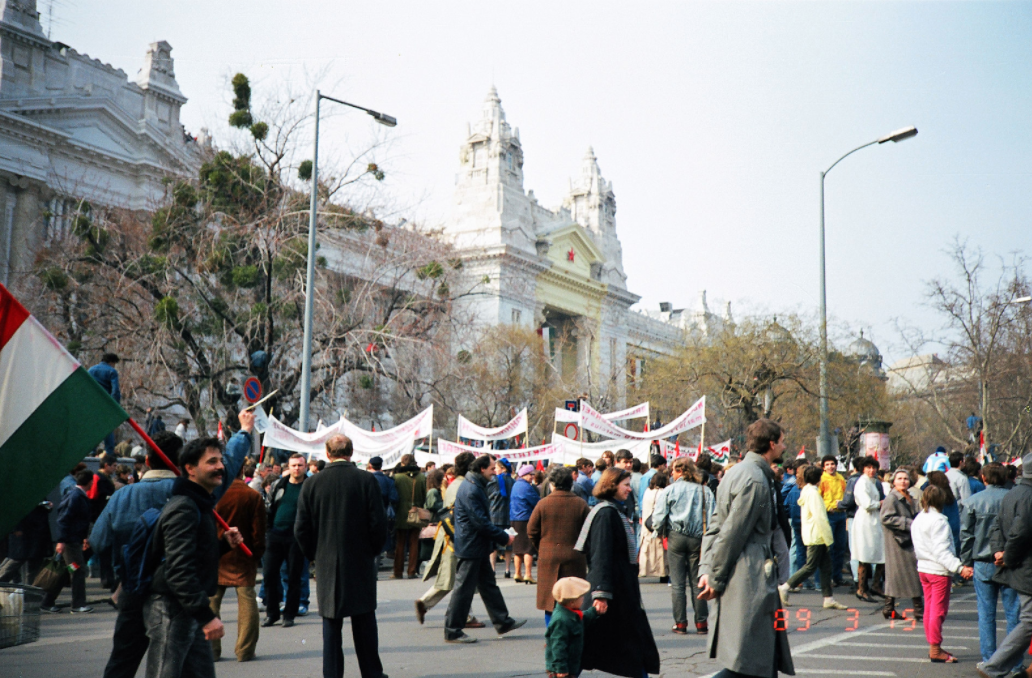
Nationalist demonstration in Hungary, 1989
Experiences of Everyday Life
While family and work responsibilities continued to shape roles for European women and men, economic changes and feminism brought significant changes to gender roles. Women gained political rights, especially voting and holding office 👩⚖️, and access to careers and education, although forms of social inequality persisted. Control over reproduction and more flexible family arrangements increased women's autonomy (personal independence). Similarly, in the late 20th and early 21st Centuries, civil rights groups produced greater freedom and equality for LGBTQ people 🏳️🌈, including same-sex marriage, in many European countries.
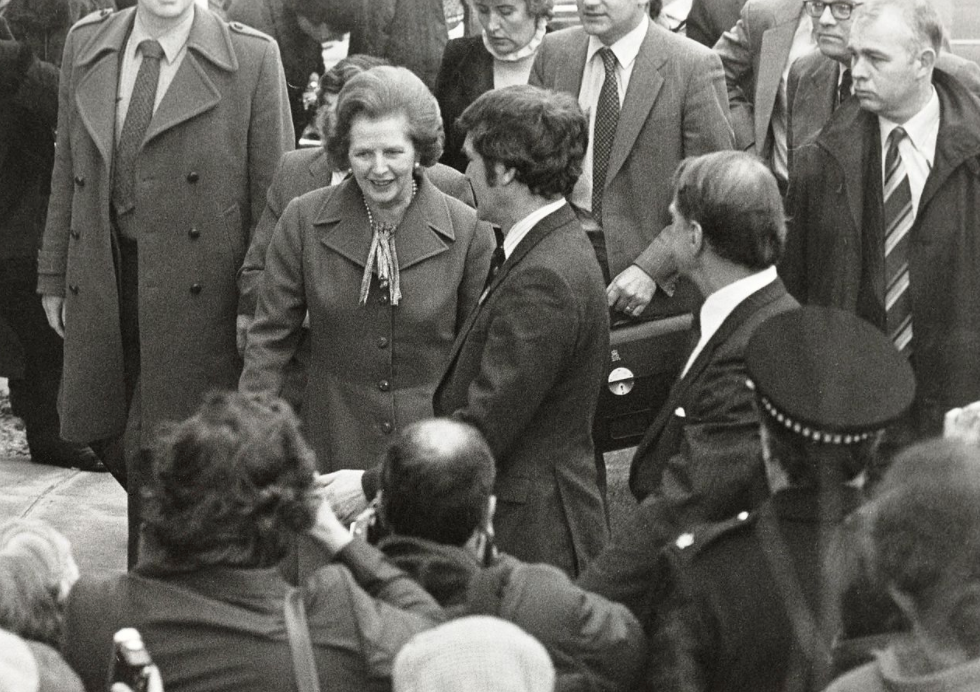
Margaret Thatcher, the first woman to become Prime Minister of the UK, 1982
New technologies also reshaped European society. Medical advances increased life expectancy while sometimes posing new ethical issues. More advanced modes of communication, transport, and transportation brought Europeans more in contact with each other and the world, a process called globalization 🌎.
Culture
Arts and philosophy
Continuing pre-war trends, European thinkers questioned the rationality of human society. Existentialist philosophers argued that humans must create their own meaning from life 👽 while post-modernism in arts, literature, and architecture (below) emphasized experimentation and self-expression 🎨.
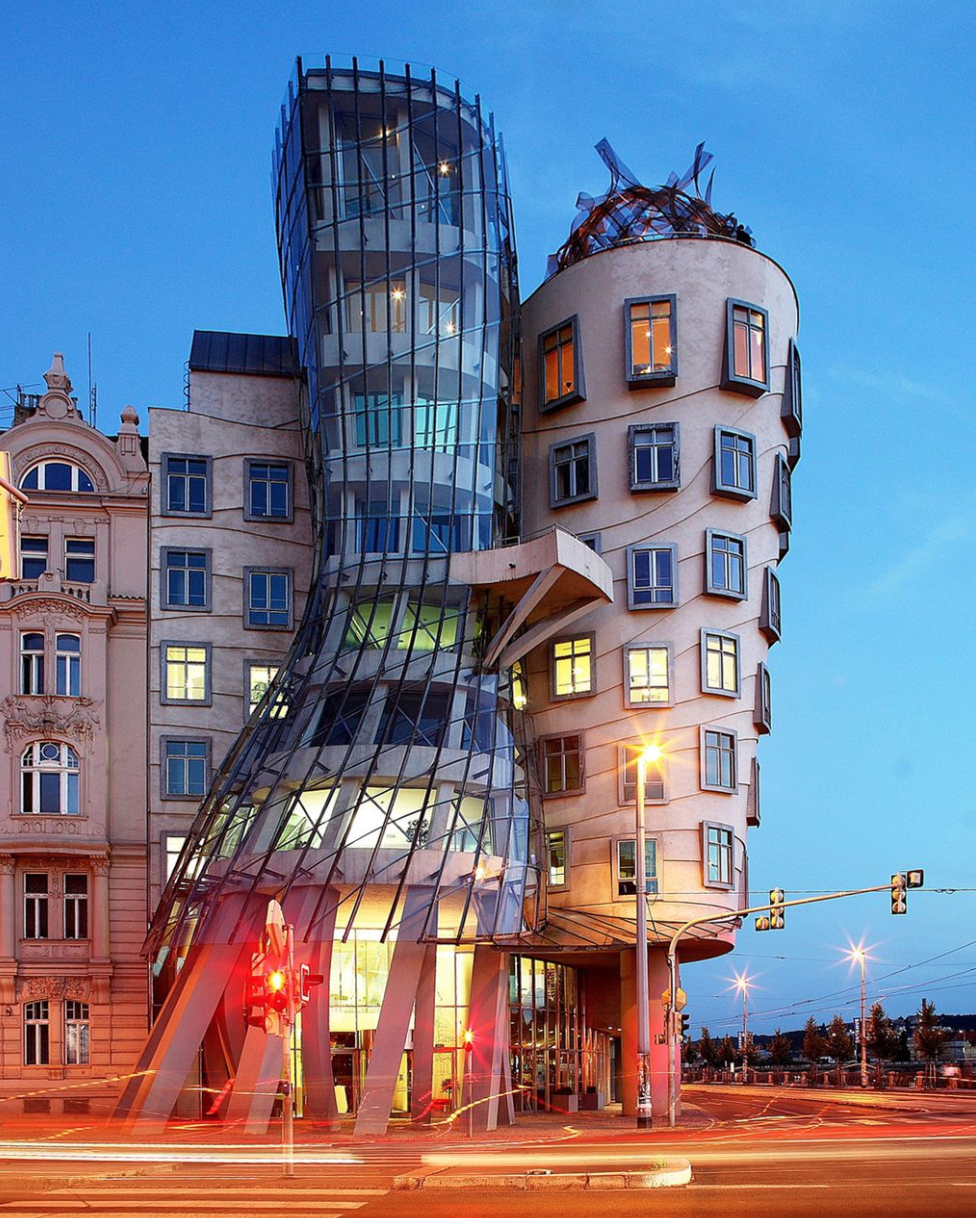
Dancing House in Prague, designed by Vlado Miluni (Croatian-Czech) and Frank Gehry (Canadian-American)
Religion
Questioning science and rationality did not necessarily lead to an embrace of organized religion. Christian churches ⛪️, like other institutions, struggled under fascist and communist repression. The Catholic Church instituted significant reforms through the Second Vatican Council (1962). Decolonization and post-war economic growth encouraged immigration ✈️ into Europe from Asia and Africa. This made Europe more religiously diverse, as many Muslims migrated to Europe. This, in turn, produced political conflicts over immigration and the role of religion in public life.
Popular Culture
Mass production, economic growth in capitalist societies, and globalization all supported a consumer culture 🛍 that emphasized spending for comfort and identity. In the years immediately following the Second World War, birth rates rose for time. This “baby boom” was the basis of an emphasis on youth and young people in the popular culture of the 1960s and 1970s. American technology 💻 and culture became increasingly prominent in European cultures, youth or otherwise. However, not everyone was a fan of this aspect of globalization, and recognizable national traditions persisted.
🎥 Watch: AP European History - European Integration
Browse Study Guides By Unit
🎨Unit 1 – Renaissance & Exploration
⛪️Unit 2 – Reformation
👑Unit 3 – Absolutism & Constitutionalism
🤔Unit 4 – Scientific, Philosophical, & Political Developments
🥖Unit 5 – Conflict, Crisis, & Reaction in the Late 18th Century
🚂Unit 6 – Industrialization & Its Effects
✊Unit 7 – 19th Century Perspectives & Political Developments
💣Unit 8 – 20th Century Global Conflicts
🥶Unit 9 – Cold War & Contemporary Europe
🚀Thematic Guides
📝Long Essay Questions (LEQ)
📆Big Reviews: Finals & Exam Prep

Fiveable
Resources
© 2023 Fiveable Inc. All rights reserved.